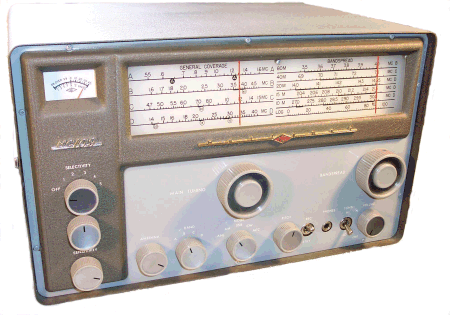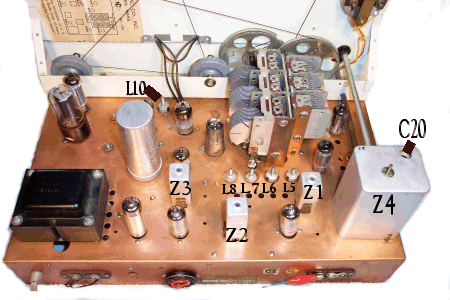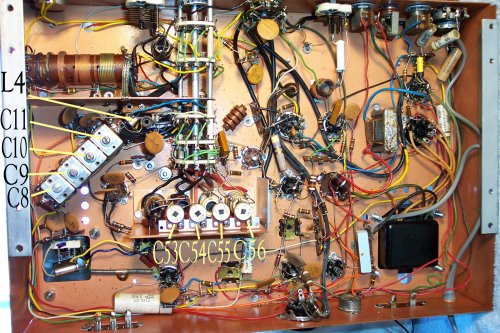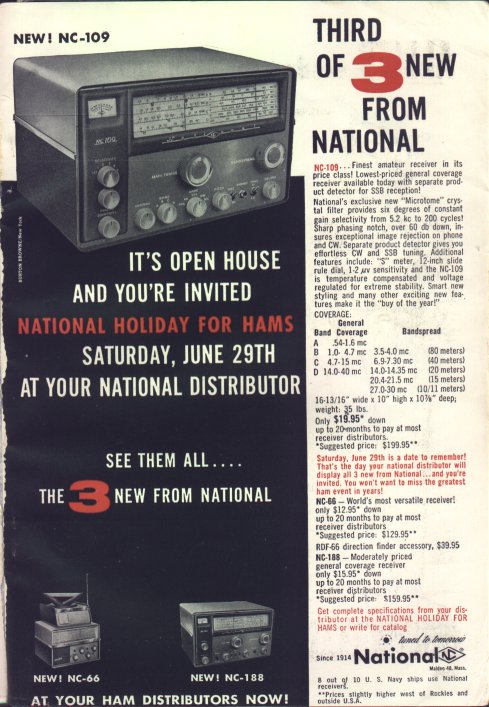Make: National
Model: NC 109
Model Year: 1957-1960
Bands: BC/SW
.54mc - 40.0mc
Schematic
Page 1
Page 2
Tubes:
3 - 6BA6
2 - 6BE6
6AL5
6C4
6AQ6
12AT7
5Y3GT
0B2
Chris' Old Radios
|

This is my father's ham receiver. Purchased new in 1958,
he's told me a couple of times how proud he was of it. I grew up twisting
and turning it's knobs as a tot and then spending many hours under
the head phones trying to find that illusive mystery station. I now
use it as my main DX receiver and probably as proud of it now as my
father was in 1958. Designed to use the 3.2 ohm National NTS-1 matching
speaker, they make quite a pair if you have them both. I use a Westinghouse
Stereo Fidelity dual speaker cabinet of the same era.
The NC 109 was introduced in early 1957 on the back page of QST magazine.
Available on the 29th of June 1957 along with it's cousins, the NC
66 and NC 88, the "Finest amateur receiver in its price class".
The NC 109 had a suggested retail price of $199.95 or "$19.95
down and up to 20 months to pay at most receiver distributors"
QST magazine reviewed the NC 109 in the January 1958 edition. Read
about the full features and specifications of this receiver at the
Radio Bay.
I need a chrome strip for the side of the cabinet, if you
have one, please email! |
| Technical |
Modifications:
The June 1959 QST magazine has an article for modifying the
NC 109. My receiver has had two modifications. I don't have a copy
of the June 59 QST but I'm sure the modifications listed below are
at least similar as covered in the magazine.
1. To allow a single relay to control the ham station, my father rewired
the standby switch circuit to the accessory socket. To use the receiver
as is a jumper must be inserted between pins 1 & 8 on the accessory
socket.
2. With the B+ to the audio output controlled through the accessory
socket, the standby switch is no longer needed, it was rewired disable
the AVC, pretty handy for CW work or DXing.
Both modifications are shown on a schematic
extract. The schematic in the manual does not show these modifications.

IF Alignment:
The alignment instructions are on page 8 of the owner's
manual but is not very descriptive, these chassis pictures point to
the referenced adjustments contained in the instructions.

|


